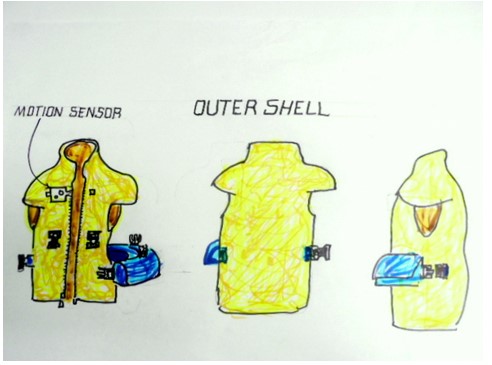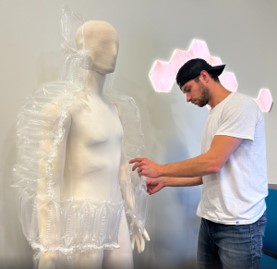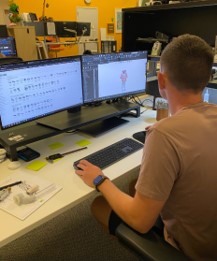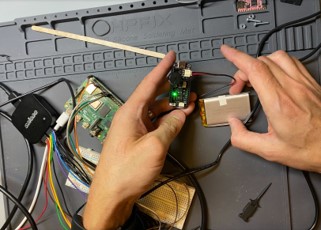
These people know what they’re doing.
One of the first things I noticed about our engineering and design partners at Kablooe is they love what they do. They solve problems. And they question everything.
How it all began

Looking back, I realize the whole idea for the SAF-T VEST began as a question. As an orthopaedic surgeon, Jay Davenport took care of hundreds, maybe thousands of older adults injured in falls.
What kind of injuries? Broken hips, head injuries, wrist, elbow and shoulder fractures. There were neck and back injuries, too. My father relied on his training and his problem-solving skills to help people recover. He didn’t worry about falling. He worried about the people who fell.
Later, well into retirement, he began to think about what could happen if he ever had a bad fall. Living in a rural area means it might be 20 minutes or more for an ambulance to arrive. Who would look after Martha (my mother) if he were hospitalized? Jay put his thoughts on paper. He questioned everything. If fall risks increase as we age, how can we reduce the consequences of falling? In other words, instead of trying to prevent falls–which is not realistic–why not build something that will protect you if you do?
That’s when he began to sketch an idea for a wearable solution. He and I called it the SAF-T VEST.

Kablooe engineers are expert problem solvers. They studied Jay’s idea, his sketches and our U.S. Patent. They reviewed brilliant proof of concept work performed by engineers at University of St. Thomas (St. Paul, Minn.).
Making it work
The SAF-T VEST is wearable technology that will detect the user’s fall in progress and almost instantly inflate a system of airbags. When the person collides with the floor, some of the air is forced out of the airbags, absorbing the impact of the fall from the hips to the head. Sounds simple, right?
Wrong.
Engineering questions

How much air is required to fill the entire network of airbags? What about making the device reusable? Is the motion sensor too sensitive? What if the person falls backward? Forward? How fast do the airbags need to inflate? What is Newton’s Ideal Gas Law? How will the motion sensor know the difference between sitting down and falling? Why do we need an algorithm?
Notes from the workshop
This week engineers are using computer aided design (CAD) to develop airbag mockups then putting them on “Manny,” our SAF-T VEST mannequin. Software coding continues, along with motion sensor testing, and calculations to determine the best airbag volumes. We’ve discussed how Jay’s airbag design provides protection to areas of the body considered most prone to fracture in a fall. We also considered the question of how much air needs to escape upon impact to decelerate and absorb the impact of the fall. This is what problem solving looks like.
I, of course, have nothing but questions.
